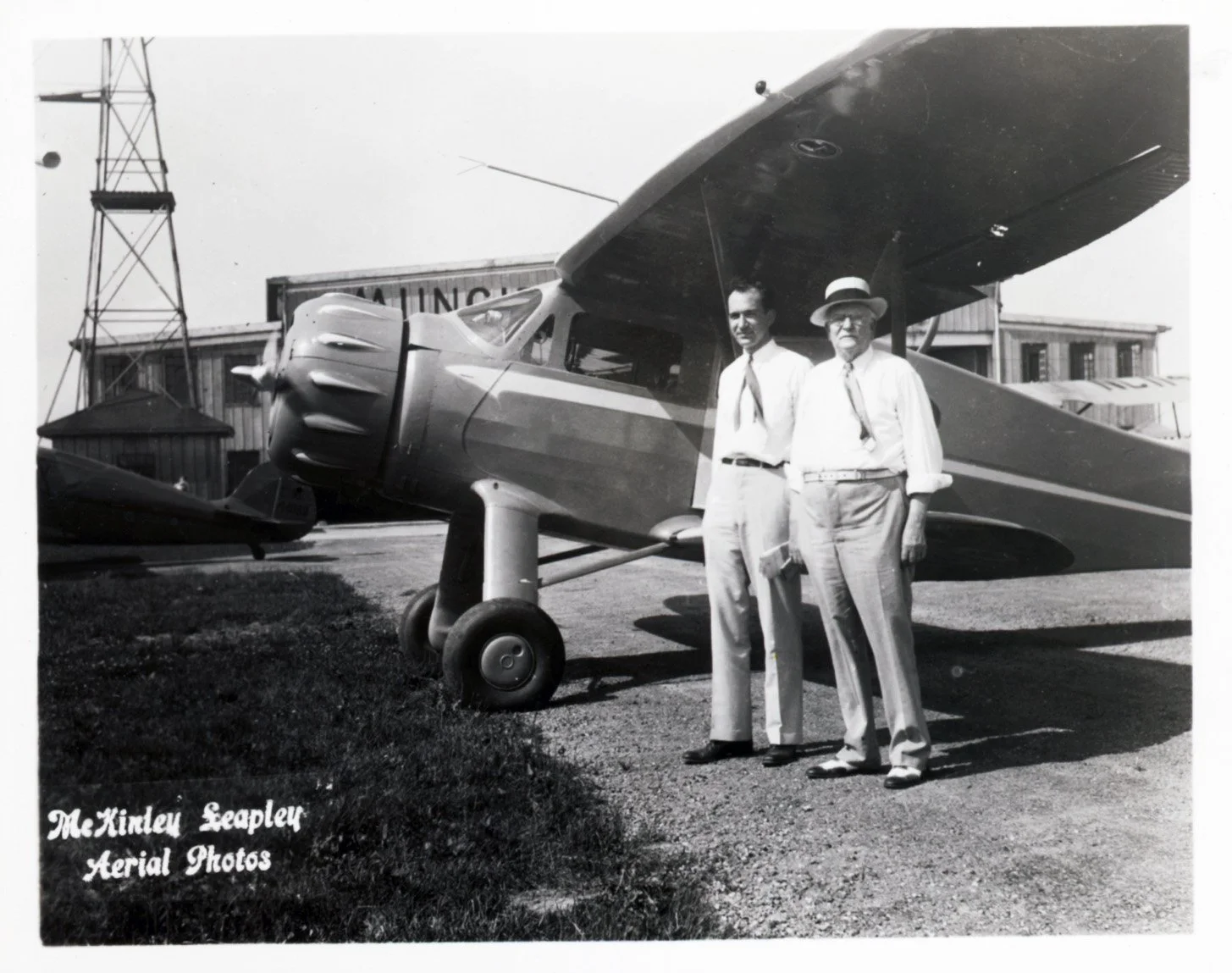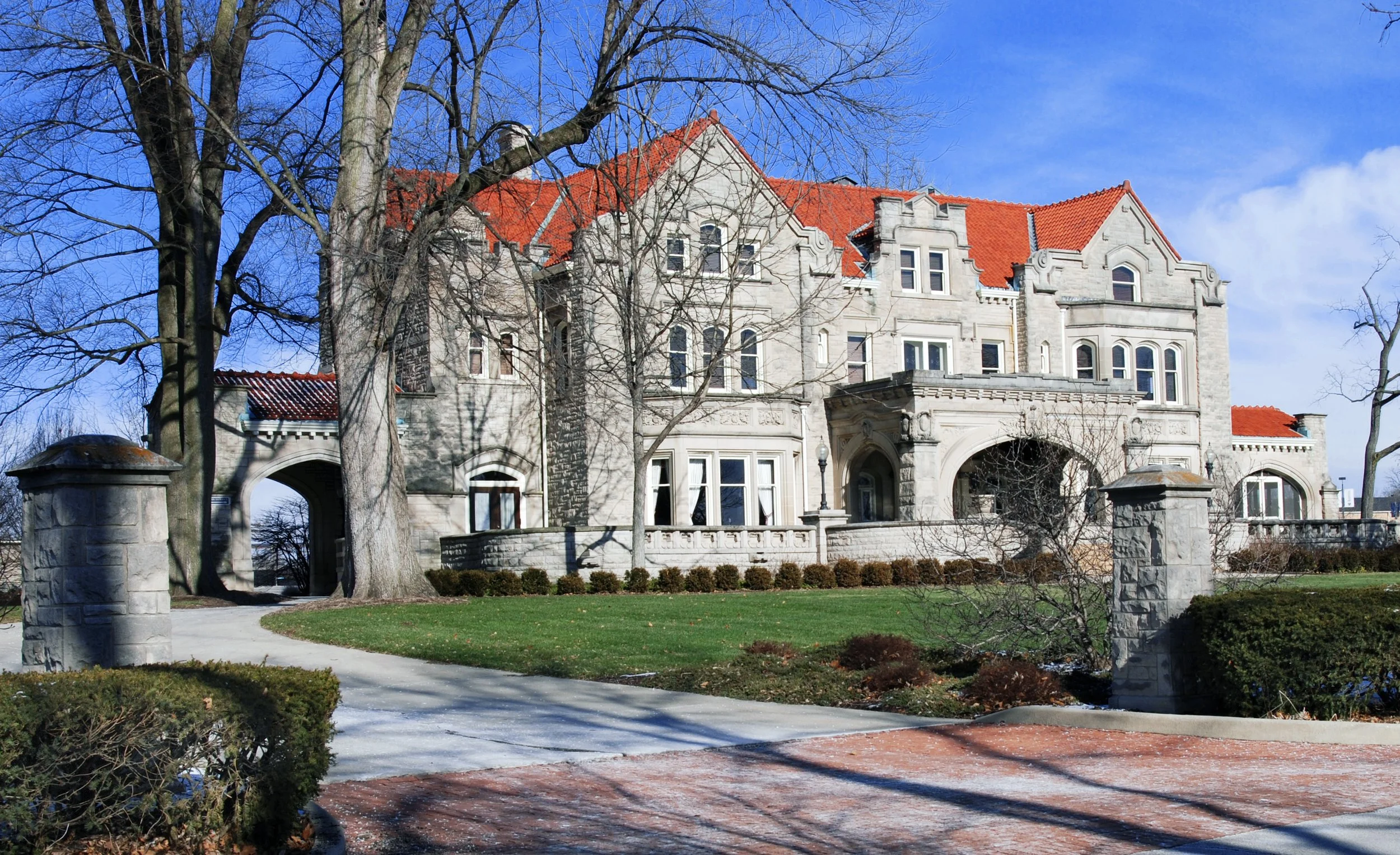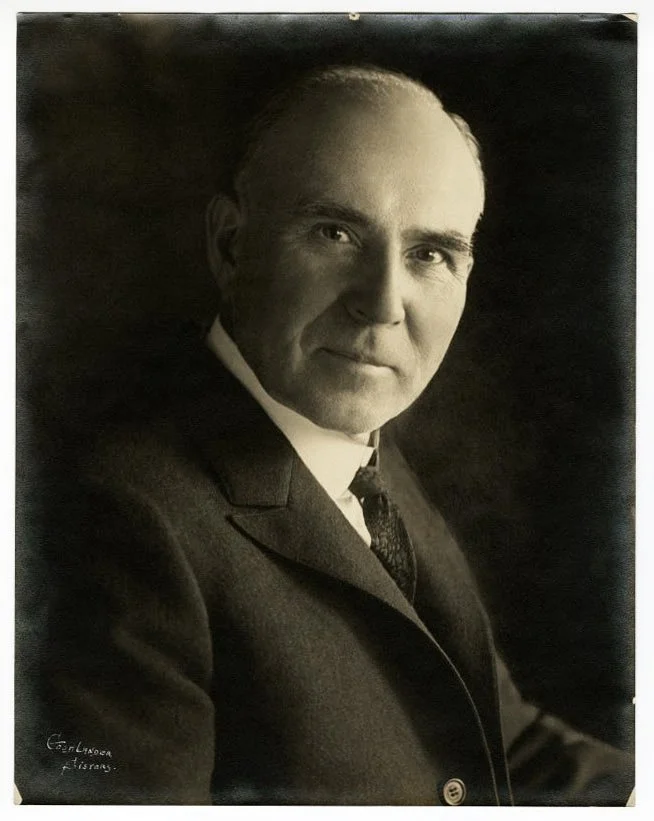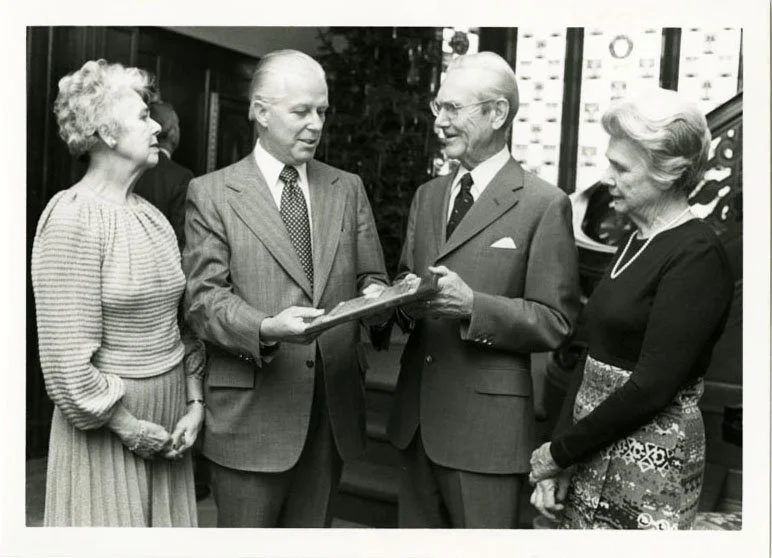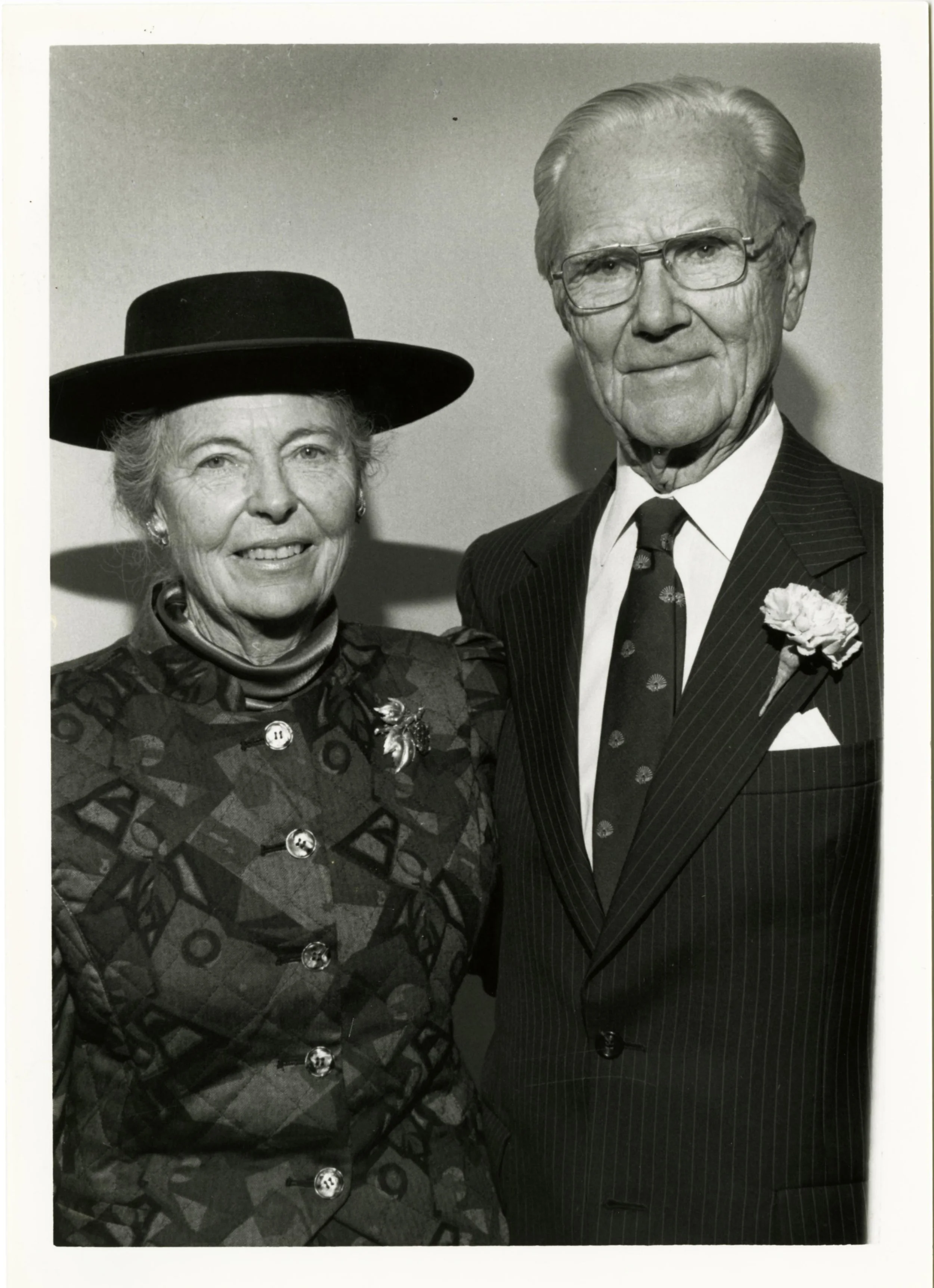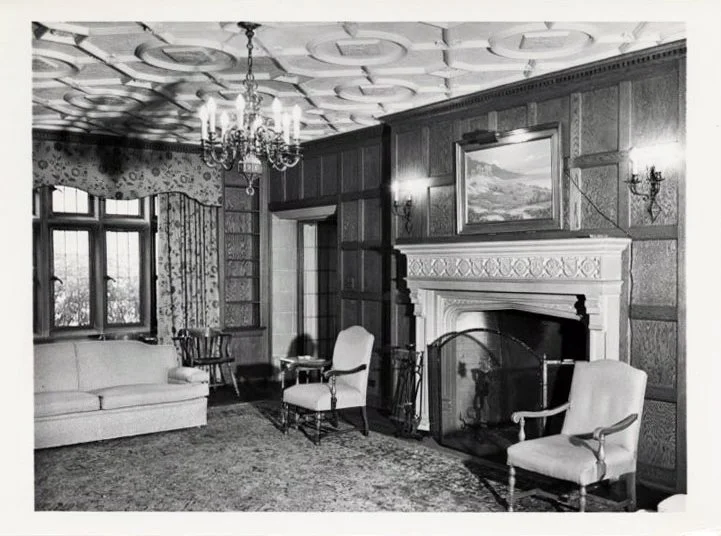Ball Legacy at Ball State University, Part Two
Frank Elliott Ball
For a hundred years, the Ball family has maintained a close relationship with Ball State University. In part 1, Susan Smith presented some of the early examples of this joint quest for educational excellence, but there are many more.
Frank Elliott Ball Memorial Hall
Frank Elliott Ball, the fourth child of Frank C. and Elizabeth Brady Ball, was the heir apparent at Ball Brothers Company. In 1930, he built the Elliott Apartments in the 700 block of North McKinley Avenue. The apartment building was acquired by Ball State University in 1965. Thirty-four years later it was moved to 2101 West University Avenue and renamed the Indiana Academy House, home of the Indiana Academy for Science, Mathematics and Humanities, a high school for gifted and talented students.
Frank E. Ball (L) standing next to Frank Clayton Ball
Frank E. Ball was killed in a plane crash in Findlay, Ohio on May 28, 1936. It was a devastating loss for his family, especially his parents. After a period of mourning, Frank C. Ball approached Ball State’s president, L. A. Pittenger, and asked what the teacher’s college needed most. The answer was a residence hall for men.
From this conversation came Ball State's first men’s dormitory, Elliott Hall. Frank C. wanted the residence hall to look like buildings found on the campus of Frank E.’s alma mater, Princeton University. Frank C. helped lay the cornerstone for the Frank Elliott Ball Memorial Hall on October 9, 1937. The trowel he used is now a part of the Minnetrista Heritage Collection. The building, which was dedicated on January 25, 1939, remains today as one of the most attractive and distinctive buildings on campus.
Two Ball homes on Minnetrista Boulevard are closely linked to Ball State today. Nebosham, the home of Edmund B. (1855-1925) and Bertha Crosley Ball (1875-1957), was completed in 1907.
Nebosham
Edmund Burke Ball
Adelia Ball Morris, Ball State President John Pruis, Edmund F. Ball and Janice Ball Fisher at the dedication of Nebosham as the Minnetrista Center for Nontraditional Adult Studies (1977)
Six years after Bertha’s death, her three children, Edmund F. Ball, Adelia Ball Morris, and Janice Ball Fisher made arrangements to lease the home to Ball State University, where it became the Bertha Crosley Ball Art Center. In 1975, the Ball Brothers Foundation donated the home to the Ball State University Foundation for use as a continuing education center; two years later it became the Minnetrista Center for Nontraditional Adult Studies. In 1986, the name was changed to the E. B. and Bertha C. Ball Center for University and Community Programs. Unfortunately, in March 2021, Ball State closed the Center because of the Covid-19 pandemic. It will be interesting to see what the future holds for Nebosham.
Maplewood
Mr. and Mrs. William Charles Ball at Maplewood
The second Ball home, Maplewood, was the residence of William C. (1852-1921) and Emma Wood Ball (1855-1942). The Colonial Revival home was completed in 1899. Seven years after Emma’s death, their only child William Hudson Ball gave the house to the Ball Brothers Foundation. From 1949 to 1951, the home was the residence for the Navajo Fraternity (Lambda Chi Alpha as of 1951). Later, Ball Brothers Company used the home for its Consumer Products Sales Division. It was then used as a guest house by Ball Corporation, Ball-Foster, Saint-Gobain, Verallia, and Ardagh. In 2017, Ball State leased the home from the Ball Brothers Foundation and set up the Maplewood Mansion Learning Lab in conjunction with the Indiana University School of Medicine-Muncie. It offers to house IU medical students who finish their clerkship in the Muncie area. It also provides a hands-on experience for Ball State students in Residential Property Management.
Ball Honors House
In 1935, Edmund F. Ball (1905-2000) married Isabel Urban (1906-1949) and brought his bride to a home he had just purchased in Muncie at 1707 Riverside Avenue. Three years after Isabel was killed in a boating accident, Ed married Virginia Beall Stewart (1919-2003). After Virginia’s death, their home was donated to Ball State. In 2009, following a $1.3 million renovation, the home opened as the Ball Honors House, the headquarters for the Ball State Honors College.
Edmund F. and Virginia B. Ball
Edwin Faye Kitselman
One Ball gift to the university is not located in a Ball home. Edwin Faye Kitselman (1870-1930) and his family moved into their newly constructed home in 1928. In 1956, three years after Mrs. Kitselman’s death, her children gifted the home at 3401 West University Avenue to Ball State for use as a conference center. In 1999, Virginia Ball gave Ball State a $2 million gift to provide immersive learning experiences and explore connections among the arts, humanities, sciences, and technology. The Virginia B. Ball Center for Creative Inquiry has been housed in the Kitselman Center since 2000.
A room in the Virginia B. Ball Center for Creative Inquiry
Please join me for part 3 to discover other ways the extended Ball family has worked with Ball State to improve the educational experience.


